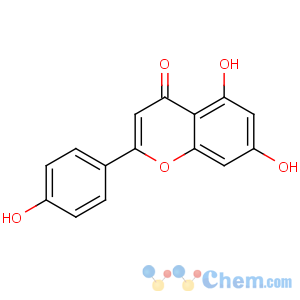Apigenin
-
- Product NameApigenin
- CAS No.520-36-5
- Purity5%~90%HPLC
- Min Quantity25Kilograms
- Price~

 View Contact Detail
View Contact Detail
-
 Molecular Structure
Molecular Structure
Detailed Description
Product Name: ApigeninSynonym: Eriodictyl-7-Rutinoside
CAS Number: 520-36-5
Specification: 5%~90%HPLC
Appearance: Yellowish brown fine powder
Botanical Source: Citrus aurantium L.
Description:
Belonging to the flavone class, which is the aglycone of several naturally occurring glycosides, apigenin can be found in many plant. When it is dried and purified, its form is yellow powder.
Apigenin exist in many plant, but the main source is celery, celeriac, and chamomile.
Application:
By series of vitro experiments and studies in animal, apigenin approved to be a variety of potential biological activities, but its effects on human body is still under developed.
Apigenin induces autophagy (a kind of cellular waste-recycling system) in leukemia cells, which may support a possible chemopreventive role, but that induction of autophagy simultaneously induces resistance against the chemotherapy drug vincristine. Apigenin is a potent inhibitor of CYP2C9, an enzyme responsible for the metabolism of many pharmaceutical drugs in the body.
When performance an experience in animal, apigenin has been shown to prevent renal damage caused by cyclosporine in rats, associated with reduce expression of the cell death mediator bcl-2 in histopathological sections. Cyclosporine A enhances the expression of transforming growth factor-β in the rat kidney, which signifies accelerated apoptosis. Therefore, transforming growth factor-β and apoptotic index may be used to assess apigenin and its effect on cyclosporine A-induced renal damage.